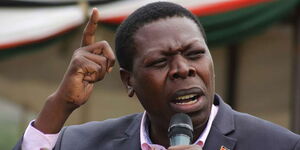The International Monetary Fund (IMF) on Monday revealed that it had set out key conditions for the Government of Kenya to meet before it disburses the $606 million (Ksh78 billion) loan already approved.
This is after fresh details emerged that Kenya would likely wait longer for the disbursements from the IMF after failing to meet key demands by the international lender in order to qualify for two-phased disbursements.
Speaking to the Business Daily, the IMF Mission Chief Haimanot Teferra indicated that Kenya was yet to respond to key issues raised by the body, especially on the Resilience and Sustainability Facility (RSF) arrangement.
First, Kenya has not convinced the IMF on how it plans to continuously generate revenue, especially in the form of taxes, so that they do not hurt the vulnerable citizens.
''Whenever we think about this type of policy, we need to also think about revenue recycling to make sure that the impact on the vulnerable is mitigated first and that we have the right framework in place,’’ Tefera revealed.
However, the IMF insists that the revenue generation strategy takes time and that they anticipated even in their early meetings in January that it would take the government time to draft their proposals.
Secondly, the Government of Kenya has not shown the IMF how it will deal with climate risks should it be given the funding. Additionally, the government has also not shown how the projects it will carry out using the funds will be profitable and ensure that funds are not lost.
''The other one is on integrating climate risks and the way projects are appraised. There is quite significant progress there by then it has not been fully completed,’’ Tefera noted.
''We anticipate this will be likely completed next time when we take this to the board,’’ she added.
Thirdly, Kenya has not fully completed the adoption of giving financial aid and incentives to key sectors like the Agricultural sector despite approval by the Treasury.
''There was the fiscal incentives framework that was approved and so what we need to see is the adoption of those and selected sectors including, for example, Agriculture and so forth,’’ the IMF chief added.
Lastly, Kenyan authorities have yet to enable Open Access to its financial projects to ensure that the public is aware of what programs the government is doing and at a cost of how much, among other minor details.
However, the Treasury has already published a draft guide for Open Access and consequently adopted a regulation on Energy Efficiency, as demanded by the IMF board.
''The final one is related to the adoption of two regulations to promote Energy Efficiency and one relates to Net Metering that we know and understand has been done. The second is the Open Access and we know the draft regulation is out,’’ the Mission Chief added.
What it means
Once Kenya submits all these to the IMF, then it will be eligible to receive the $606 million (Ksh78 billion) loan under two phases and arrangements. The two arrangements include the Extended Credit Facility (ECF) and the Sustainability Facility (RSF).
The above scenario will see Kenya get US$485.8 million (Ksh62.5 billion) under the ECF arrangements and about US$120.3 million (Ksh15.4 billion) under the RSF arrangement totalling to the $606 million (Ksh78 billion) loan.












